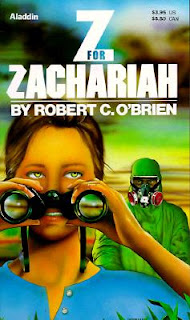Paper Crowns and Redeeming Myths: An Interview-ish Thing with Mirriam Neal
Today it is my very great pleasure to interview/host Mirriam Neal as part of the blog tour for her newly published novel, Paper Crowns. I had the privilege of beta reading this book last summer and I can't wait to read the final version. Below you can see the beautiful cover and the synopsis of the book.
Ginger has lived in seclusion, with only her aunt Malgarel and her blue cat, Halcyon, to keep her company. Her sheltered, idyllic life is turned upside-down when her home is attacked by messengers from the world of fae. Accompanied by Halcyon (who may or may not be more than just a cat), an irascible wysling named Azrael, and a loyal fire elemental named Salazar, Ginger ventures into the world of fae to bring a ruthless Queen to justice.
And without further ado, the interview:
ED: Ever since I first read Paper Crowns, I've only been able to think of it as a fun romp through Faerie. What drew you to writing a story about Faerie in the first place? What was your favorite aspect of Faerie to explore?
MN: Honestly Paper Crowns feels like one very small idea of Faerie, and one that I didn't explore nearly as much as I wanted to. Faerie is a world open to endless interpretations and explorations -- and that's my favorite aspect, never knowing what you'll run into. I had no idea. It's why I wanted to write about it in the first place -- I hadn't done it before.
ED: One of the things that (pleasantly) surprised me about Paper Crowns was the inclusion of Cernunnos, the Horned God of Celtic myth. I really enjoyed your use of that character and the way you dealt with him. Could you talk about how he came to be a part of the story and what about him fascinated you (both in myth and in your world)?
MN: I've always been fascinated by the aesthetic of Cernunnos, and the different ways his appearance is interpreted. He always seemed more mysterious and majestic than, say, mythological Greek figures like, say, Bacchus (whom I wouldn't trust with a paper clip). Cernunnos wanted to be from Faerie, so I let him, and then I had to decide what to do with him! Or rather, just let him do what he wanted to do. You don't boss Cernunnos around.
ED: Cernunnos' presence in the story reminds me a lot of the nymphs, river gods, dryads, and so forth that C.S. Lewis uses in the Narnia books. He especially makes me think of the river god and Bacchus in Prince Caspian, since they acknowledge subservience to a higher power, and of Tumnus in The Lion, the Witch, and the Wardrobe. Tumnus' story follows a typical Greek faun's -- he lures a young girl away, lulls her to sleep with music, and intends to kidnap her (or worse, in the myths). Yet Lewis redeems Tumnus by making him repentant of his actions and in some ways an unwilling victim. You do something similar with Cernunnos, taking someone with wild and dark associations in pagan beliefs and making him what I think we can call a truer version of himself. Was that always your intention with Cernunnos? Is that something you see yourself doing much of in your books? How has Lewis' tendency to redeem myths influenced your own work?
MN: Lewis once said that when paganism echoes Christianity, we ought to say, "So much the better for paganism, not so much the worse for Christianity." He could not have phrased it better. All my life I noticed how afraid the Christianity I knew was -- of mythology, of myths, of false gods, and this all seemed terribly wrong. Why should we be afraid of them? Are they a threat? Are they stronger? No -- and so I believe, as Christians, we have a responsibility to redeem 'paganism,' as it were. Christianity is a redemptive faith. We take over tunes of old songs and re-construct them for Christ, to name an example. Missing the value and vibrancy of old myths seems like a tragic waste. Finding the 'truer self' of things, as you said -- that's beautiful. I think that's what we as Christians are meant to do.
ED: Your books tend to tackle questions of faith and morality. This is especially evident in Monster, which tackles issues related to biological testing and the definition of life. How does Paper Crowns do the same? How does it differ?
MN: Paper Crowns differs heavily from my other novels because I didn't set out to tackle questions. Paper Crowns just wanted to be a faerie tale, and so I let it -- although I wanted it to be a faithful faerie tale, something everyone could read and enjoy. Usually my books aren't kid-friendly, so I wanted to break my modus operandi and write a kid-friendly faerie tale.
ED: You mentioned in your interview with Arielle that you've written one sequel to Paper Crowns (consider this a not-so-subtle nudge to get it ready for beta reading) and have several more in the works. Will Cernunnos come back? (I certainly hope he does.)
MN: I would very much love for Cernunnos to come back. His part was small and he has, I think, a lot more to give.
Mirriam Neal is a twenty-two-year-old Northwestern hipster living in Atlanta. She writes hard-to-describe books in hard-to-describe genres, and illustrates things whenever she finds the time. She aspires to live as faithfully and creatively as she can and she hopes you do, too.
If you want to read more about Mirriam's work or see what she's up to, check out her blog at https://mirriamneal.com/. You can also send questions and comments to her at the-shieldmaiden@hotmail.com.
For other blogs hosting Mirriam and Paper Crowns this month, check out the master list and schedule at The Splendor Falls on Castle Walls.
Check out Paper Crowns at Goodreads and Mirror Publishing.
Order your own copy of Paper Crowns at Amazon or Barnes and Noble.
You can also find Mirriam's first novel, Monster, at Amazon.





Awesome interview! Faerie and Celtic myth and Christianity... loved the questions and answers and I feel somehow like my day was deepened by reading it. Fascinating. Thanks, Elijah and Mirri! :)
ReplyDeleteOoh! This was good! What a great interview! I loved the part about redeeming things like myths and stories.
ReplyDelete